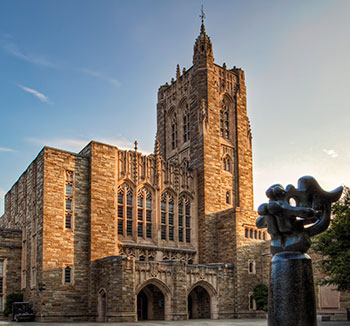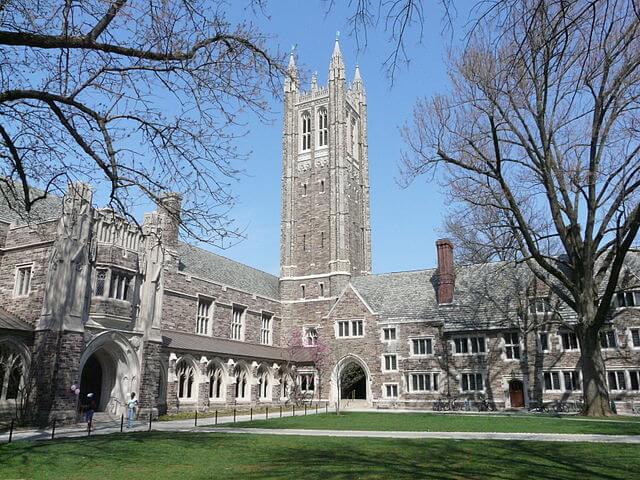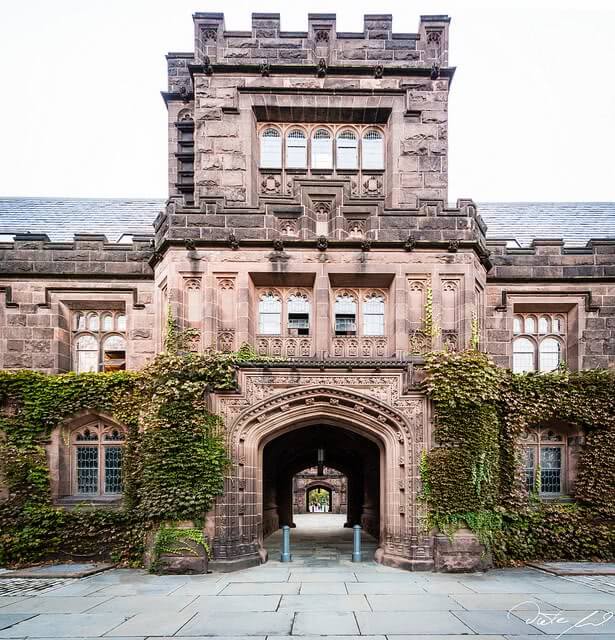
Firestone Library, Princeton University. Photo via Flickr.
Most students who consider attending an Ivy League college, like Harvard and Stanford, think of them as dream schools. Even some well-qualified students shy away from applying. They think they could never afford an Ivy League college. The good news is that, for most students, Ivy League colleges and other elite, selective universities are often actually some of the most affordable colleges in the country.
Colleges are required to publish an annual cost of attendance. This price includes tuition and fees, transportation, room and board, books, and some miscellaneous expenses. At elite private colleges, the cost of attendance is commonly around $60,000 a year.
Ivy League colleges: Sticker price vs Net price
So, how could they possibly be the most affordable colleges in the country? It comes down to understanding net price vs sticker price and how colleges award financial aid.
The published cost of attendance is also called a school’s “sticker price”. Most students don’t pay sticker price to go to college. Instead, they pay the “net price,” which is the annual cost after financial aid is factored in. When you filed the FAFSA and the school accepts you, you’ll receive an acceptance letter and an award letter. The award letter breaks down costs. That includes the total cost of tuition and how much federal student loans the school is offering you. However, it also includes any merit-based scholarships and grants the school is offering. The “net price” is however much the school is offering you, including any federal student loans and excluding work study, subtracted from the “sticker price”.
Ivy League college financial aid and how you can afford the school
Selective colleges tend to be generous with need-based financial aid. In 2012, the average Harvard student with financial need received $39,754 in need-based grant funds. At Stanford, this number was $36,389.
Grants are awarded on a sliding scale–meaning the higher your financial need, the more grant aid you’re eligible to receive. Harvard, for instance, pledges to meet 100 percent of need for students whose families make under $60,000 a year.
Selective colleges also tend to practice need-blind admissions. This means that your chances of being accepted to a college are not affected by your ability to pay. In other words, you won’t be turned away because the college can’t afford you. Your financial circumstances do not affect your admissions odds at all.
If you feel you’re qualified, don’t be scared away from applying because of a college’s sticker price. Instead, use net price to compare college financially.

What does that mean for you?
Well, that means that most likely, you can actually afford Ivy League colleges! Despite their high sticker price, most Ivy Leagues offer generous financial aid packages. In other words, most of the cost is covered.
Wonder how much it would cost you to go to schools like Harvard? College Raptor can be used to quickly estimate your net price at Harvard, Stanford, and any other four-year college in the U.S., showing you which schools may offer you the best financial aid and will actually be most affordable for you.
| Lender | Rates (APR) | Eligibility | |
|---|---|---|---|
 |
5.50%-16.12%* Variable
3.99%-15.61%* Fixed
|
Undergraduate and Graduate
|
VISIT CITIZENS |
 |
5.54% - 15.70% Variable
3.99% - 15.49% Fixed
|
Undergraduate and Graduate
|
VISIT SALLIE MAE |
 |
4.63% - 17.99% Variable
3.49% - 17.99% Fixed
|
Undergraduate and Graduate
|
VISIT CREDIBLE |
 |
6.00% - 13.75% Variable
3.99% - 13.75% Fixed
|
Undergraduate and Graduate
|
VISIT LENDKEY |
 |
5.66% - 14.72% Variable
3.69% - 14.56% Fixed
|
Undergraduate and Graduate
|
VISIT ASCENT |
 |
3.70% - 8.75% Fixed
|
Undergraduate and Graduate
|
VISIT ISL |
 |
5.62% - 16.85% Variable
3.69% - 16.49% Fixed
|
Undergraduate and Graduate
|
VISIT EARNEST |
 |
5.00% - 14.22% Variable
3.69% - 14.22% Fixed
|
Undergraduate and Graduate
|
VISIT ELFI |





